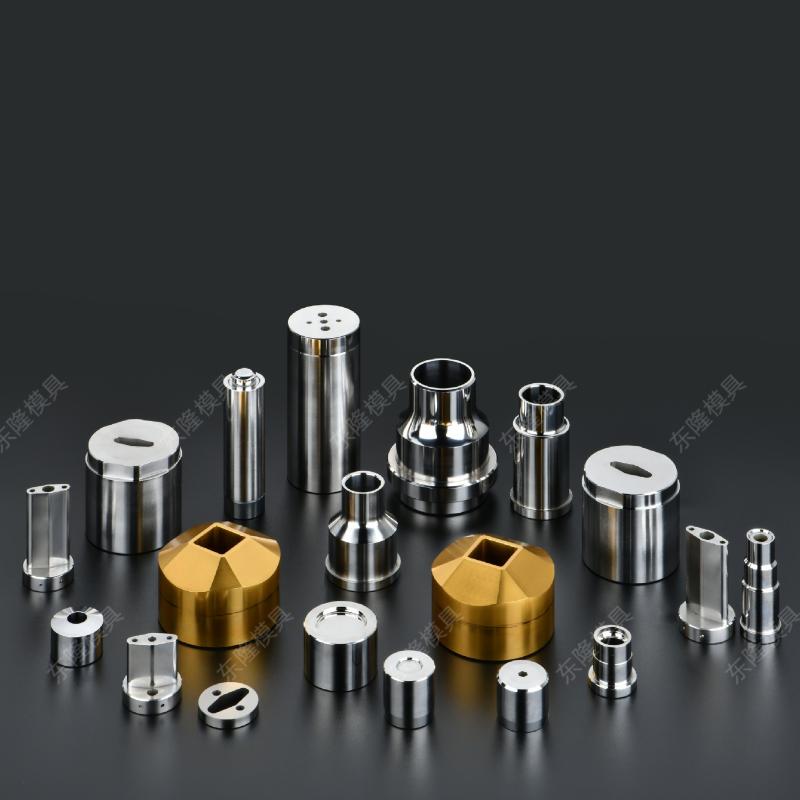Steel Dies: Definition, Characteristics, Applications, and Maintenance
1. Definition of Steel Dies
Steel Dies are precision tools used in manufacturing processes to cut, shape, or form materials into specific designs. Typically made from high-grade tool steels (e.g., D2, A2, or H13 with hardness ranging from 58-62 HRC), these dies undergo specialized heat treatment processes (quenching at 980-1050°C and tempering at 180-250°C) to achieve exceptional durability. The dimensional accuracy of precision dies can reach ±0.005mm, with surface finishes as smooth as Ra 0.2μm for critical forming applications.
Key manufacturing processes for Steel Dies include:
CNC machining with positioning accuracy of ±0.002mm
Wire EDM with cutting precision of ±0.005mm
Grinding operations achieving surface flatness within 0.001mm/mm

2. Technical Characteristics of Steel Dies
Modern steel dies exhibit several critical performance characteristics:
2.1 Mechanical Properties
Premium die steels demonstrate:
Tensile strength: 1,500-2,400 MPa
Yield strength: 1,200-2,000 MPa
Impact toughness: 20-50 J/cm²
Thermal conductivity: 24-42 W/m·K
2.2 Wear Resistance
Advanced surface treatments enhance die longevity:
TiN coating increases surface hardness to 2,300-2,400 HV
TD coating provides wear resistance 10-20 times better than uncoated steel
Plasma nitriding creates case depths of 0.1-0.3mm with hardness 1,000-1,200 HV
2.3 Thermal Stability
Hot-work die steels maintain dimensional stability:
Heat checking resistance up to 600°C
Thermal expansion coefficient: 11-13 μm/m·°C
Annealing hardness typically 220-250 HB for machinability
3. Application Scenarios
3.1 Automotive Industry
Progressive dies produce 800-1,200 strokes per minute for:
Body panels with thicknesses from 0.6-2.3mm
Structural components requiring ±0.15mm dimensional accuracy
High-strength steel forming at pressures up to 1,500 tons
3.2 Electronics Manufacturing
Precision blanking dies achieve:
Fine pitch stamping down to 0.1mm lead frames
Connector production with ±0.01mm positional accuracy
Burr heights controlled below 0.005mm for critical contacts
3.3 Aerospace Components
Superalloy forming dies operate at:
Temperatures up to 950°C for titanium forming
Isothermal forging conditions maintaining ±5°C temperature control
Service lives of 5,000-10,000 cycles for critical airframe parts
3.4 Consumer Goods
High-volume production dies feature:
Multi-cavity molds with 64-128 cavities for small components
Cycle times as fast as 2-3 seconds for plastic parts
Surface textures replicating SPI A-1 finishes
4. Maintenance Procedures
4.1 Routine Maintenance
Daily/Weekly procedures include:
Cleaning with pH-neutral solvents (7.0-8.5 pH range)
Lubrication using synthetic diester oils (ISO VG 68)
Visual inspection for wear exceeding 0.05mm on critical edges
4.2 Preventive Maintenance
Scheduled maintenance involves:
Ultrasonic cleaning at 40-60kHz for complex geometries
Laser scanning to detect wear patterns beyond 0.01mm
Recoating when surface roughness exceeds Ra 0.8μm
4.3 Storage Protocols
Proper storage requires:
Climate control at 20±2°C and 40-50% RH
VCI (Vapor Corrosion Inhibitor) packaging with 0.05mm thick films
Rust prevention oils with >500 hours salt spray resistance
4.4 Repair Techniques
Advanced restoration methods include:
Laser cladding with 50-200μm deposition layers
Micro-welding using 0.2-0.6mm diameter filler wire
Selective electroplating achieving 0.01-0.03mm thickness control











